#year of learning
Explore tagged Tumblr posts
Text
BOOK REVIEW - Unmasking Autism: The Power of Embracing our Hidden Neurodiversity by Dr Devon Price
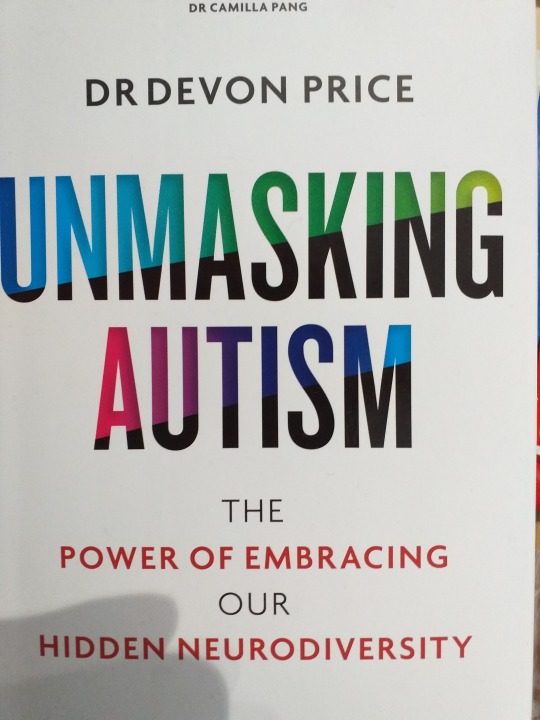
My third book this year was an eye-opening treatise on living with masked autism, trying to present as neurotypical when you're not, and the difficulties one can face as a result. I've often ended up feeling burnt out, exhausted, unable to do anything after even short periods of work, and reading Unmasking Autism brought a lot of familiar feelings to the surface that I had forgotten.
Too often we forget that the world is not made for us - the grind of daily 9-5, social obligations full of unwritten rules, and tedious tasks which seem utterly pointless, all serve to drain the energy of neurodivergent folk. For myself, I've struggled to hold down jobs and work without experiencing severe burnout as a result of my undiagnosed mental conditions. This book has finally explained why.
Dr Devon Price is an austistic social psychologist, and he's put his career to excellent use to construct a field guide to living with autism from the inside out. Too often, mental health conditions are diagnosed and researched from outside, with the scientist's demand for a dispassionate eye; Dr Price proves that lived experience can be invaluable to expanding our understanding of mental health, as he takes us through the history of autism research and explores the lived experiences of autistic individuals who have lived for many decades without a diagnosis. He calls out autism as currently viewed as a rich, white, male disorder, a problem codified by the eugenicist researchers who originally named it, and explores the condition in greater depth and scope, examining how it manifests in women and people of colour. He also looks at society as a whole, how it is structured to exclude those with autism and other disabilities, and points out how we can change all this to better support and encourage autistic people.
Overall this was an eye-opening book. It was greatly detailed and there were points where I found myself pausing in the realisation that Dr Price was expounding on a topic I had struggled with for much of my life. It has the problem that is quickly becoming familiar - that the chapters are too long to comfortably read in one sitting, and it feels as though Dr Price would try to find too many examples to demonstrate a topic at times. But for an examination of masking as an autistic person, and a guide to autism from someone who understands it with their whole life, it's a unique and long-overdue book.
#Book Review#Year of Learning#nonfiction#Autism#Mental Health#Dr Devon Price#neurodiversity#Psychology#Sociology
35 notes
·
View notes
Text
No bcus the implications of the Saja Boys are so funny like??? Jinu is the only one we've seen has a confirmed music background so did he have to research, train, style, and manage the group by himself???? Did he also have to come up with the concepts and the marketing or is there like a demon thats rlly good at photoshop? Or if its all Jinu that means he had to teach himself fucking adobe after effects and how to use tiktok. Also how did he even research how to make a boy group was he in the trenches of BTS comment sections??? God the more I think about the Saja Boys the funnier it gets
#kpop demon hunters#saja boys#jinu#need a bonus vid thats just a training montage#how tf did baby saja learn how to rap#if jinu is 400 years old how old are the rest of them#bro had to teach them the concept of fan service#“no u don't get it man u gotta break ur buttons on purpose the humans will love it”
7K notes
·
View notes
Text
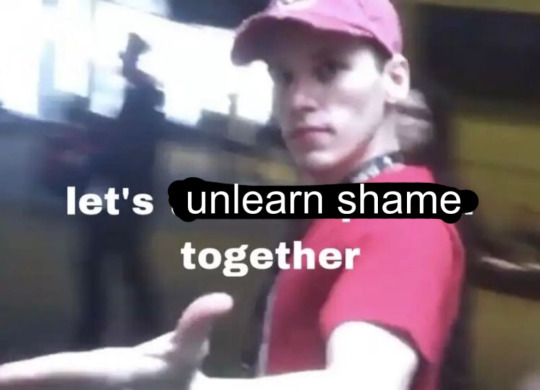
#i’ve been thinking abt that cringe post#i think the latent feelings behind ‘cringe’ are shame and sometimes envy/bitterness#same vibes as when six year olds say ‘those toys are for babies’ if they’ve been shamed for their age by older kids#anyway. i think part of the healing process is realizing that shame puts you at war with yourself bc part of yourself is a social being!#and that part of you wants community and acceptance (maybe love). shame is the absence of acceptance#unlearning shame means learning self-love and gaining the confidence to find your people#jerma#cw jerma#(someone asked me to tag lol)
60K notes
·
View notes
Text



Kind of a dancing cactus Cosmo au? Sounds lame
#mkay so this takes place in tails’ 20s or smth#cosmo can’t talk just kinda hums#she does NOT remember him but regains memories slowly as she grows#unfortunately for tails it’ll be years and years before she even learns to speak again#their lifespans are fucked up n out of sync now#even if the love he has for her has shifted and changed over the years it’s still there and she can tell how much he cares abt her#anyway I’m sooo normal today#sonic the hedgehog#sth#miles tails prower#cosmo the seedrian#tailsmo#my art#fanart
4K notes
·
View notes
Text
THE BANANAS ARE GAY
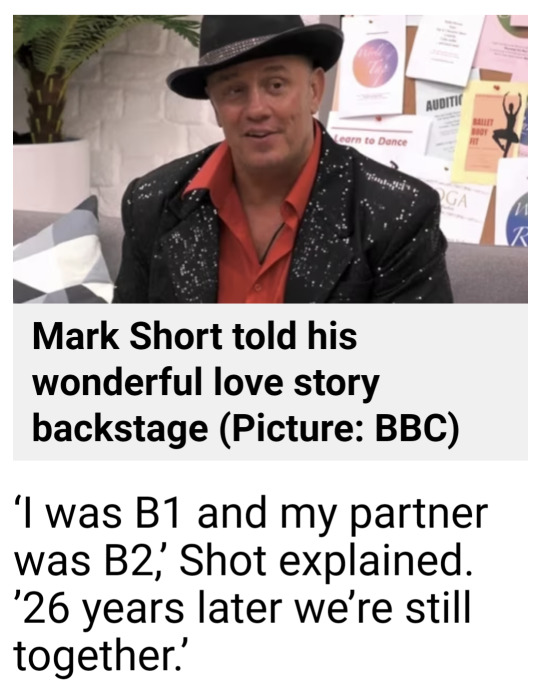
THESE BANANAS

THE BANANAS IN PAJAMAS ARE GAY
BELATED HAPPY PRIDE MONTH EVERYONE
#somebody shut me up#this news is 4 years old but forgive me i only learned of it now#THE BANANAS IN PAJAMAS ARE GAY YALL thats my childhood
84K notes
·
View notes
Text

Keep thinking about that one scene in secret life
#it was so silly i've had this visualised in my head for ages#actually sick of this comic now tho the colouring made me question tf I've been doing for 10 years#anyway#the sillies#not set on any of these designs btw and Scott isn't in his band outfit BC he isn't part of it yet in the series#which is the excuse I'm using bc I haven't solidified that design yet#tag time#secret life#life series#scott smajor#smajor1995#trafficblr#jimmy solidarity#goodtimeswithscar#this probably the second comic I've ever finished ever so#IM LEARNING OK#fandumb fanart#ALSO ALSO guess where I got the death messages the
11K notes
·
View notes
Text
His ass does not pay attention enough to know all of their genders. Toph wears baggy clothes, he squinted at her and went “yeah that’s a boy. Or boy adjacent. Probably.” and moved on. Ally???
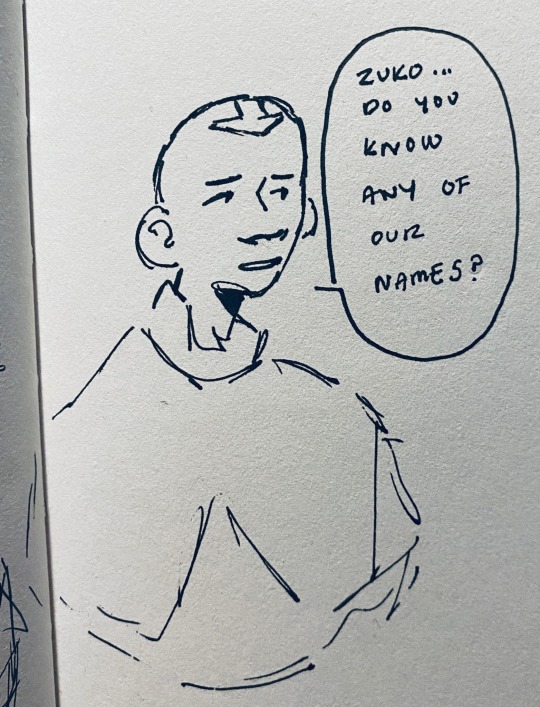
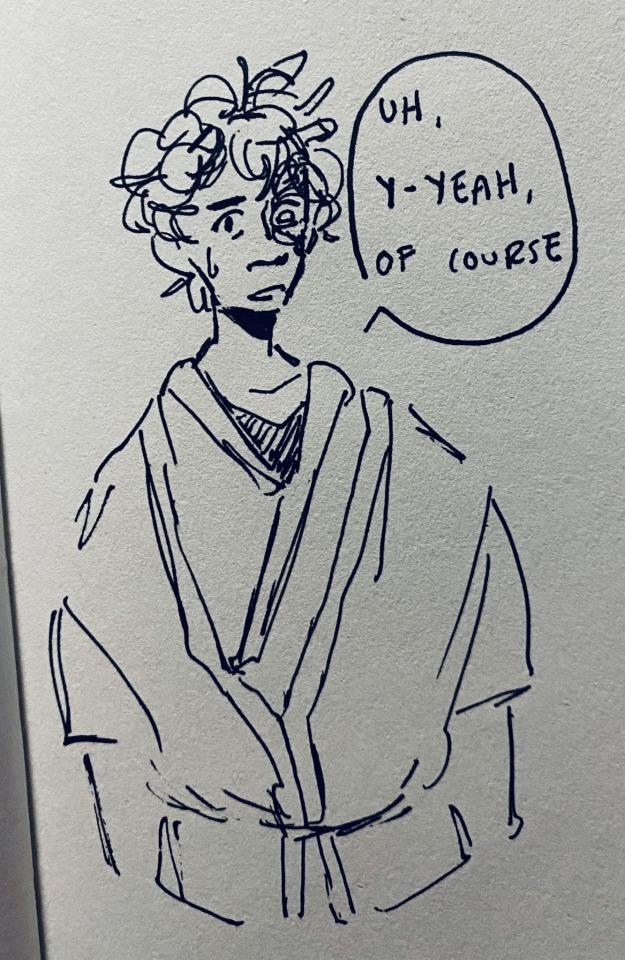

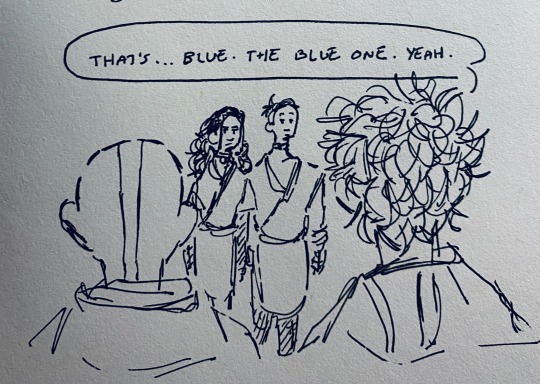
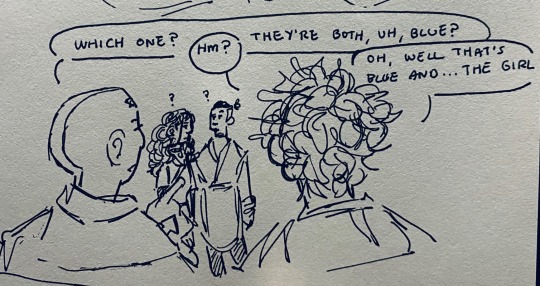
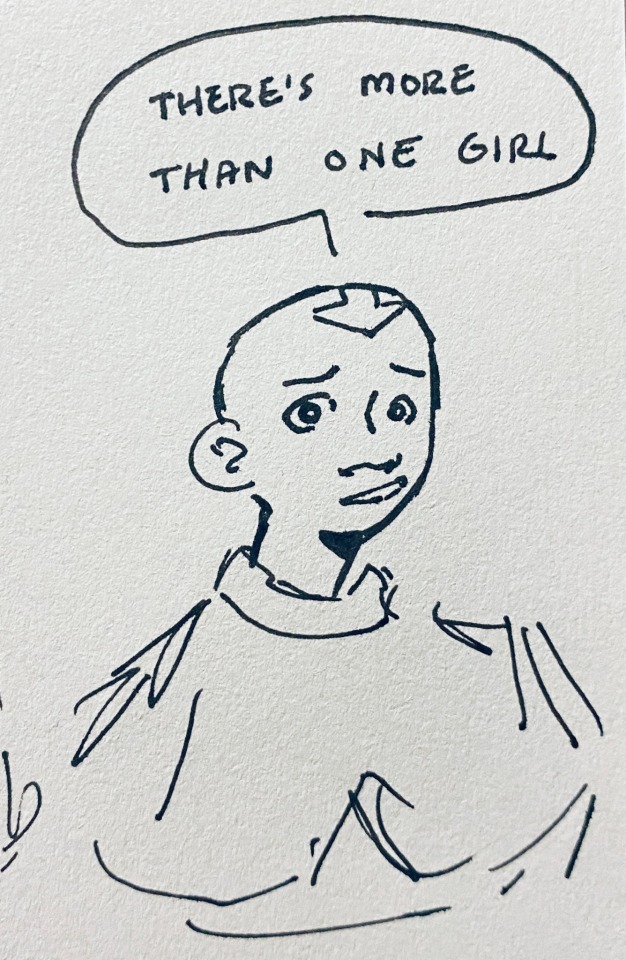
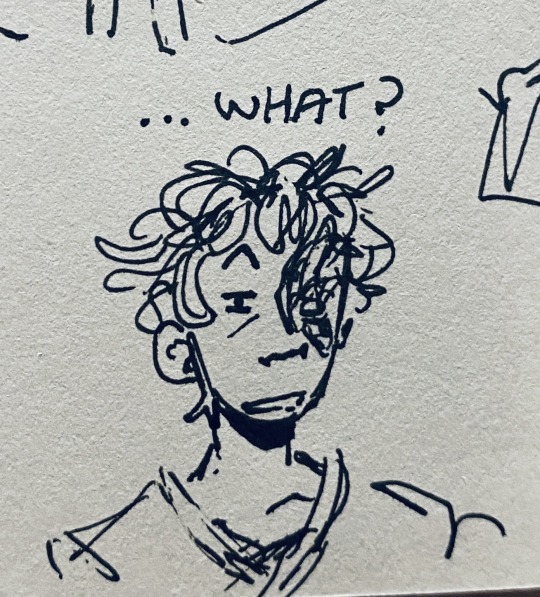
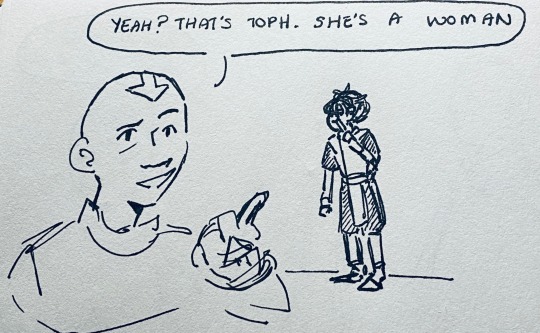
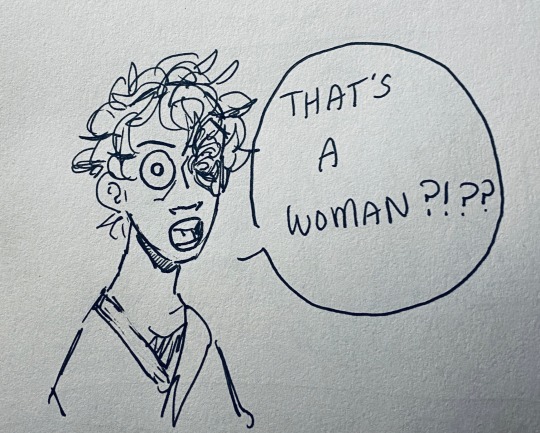
#memes#my crappy art#art#kay draws#atla art#atla fanart#atla#avatar#avatar the last airbender#sokka#aang#avatar aang#zuko#flameo hotman#fire lord zuko#katara#toph#toph beifong#ally????#assigned trans masc at zuko#poor guy only had to know one name (uncle) for like ten years and now you expect him to what? learn two? THREE names????
14K notes
·
View notes
Text
One of my all time biggest pet peeves with historical(ish) fantasy is when the writer constructs a religion with a clear bias that it's stupid and false and therefore only the Stupid People and/or commoners believe in it and all the smart/elite main characters are like, quasi-atheists or otherwise just routinely flout established religious conventions of orthodoxy and/or orthopraxy because they're Too Smart for it or etc.
It's usually an extension of assumptions that people in the past were just less intelligent than in the contemporary, just being like "I know that the sun is a star millions of miles away that the earth orbits, but this ancient religion describes it as a chariot flying through the sky" and not really bothering to learn the context and just (consciously or subconsciously) settling on 'that's a crazy thing to think and was probably believed in because they were Stupid'.
And that whole attitude pisses me off so much. People were as 'smart' 10,000 years ago as they are today. These beliefs aren't just desperate, random flailing to explain phenomena that could not directly be accounted for either, it's not like people just looked at the sun and went "Uhhh I don't know what the fuck that thing is, actually. I guess it might be a chariot or a boat or something?? Yeah let's go with that." and based entire religious practices on this. Every well-established belief system exists within broader contexts of cultural values/subjective perceptions of reality/knowledge systems/etc, and exist as part of a historical continuum of religious practices that came before. Even when not Materially Correct, they have context and internal logic, they're not always dead literal with zero levels of allegory, and they're never a result of stupidity.
#I think you're failing at good worldbuilding and also just like. Idk failing at being an understanding human being willing to learn about#people different from yourself when you approach writing religion from a 'uhhhh what's some random stupid shit people believed in#2000 years ago' angle#Like make an effort to understand the logic and worldviews and value systems that informed these practices before you synthesize your own
9K notes
·
View notes
Text

something my coworker's 3 year old did the other day, glorious ( ' ')b
next
#one piece#vinsmoke yonji#vinsmoke ichiji#sanji#niji vinsmoke#sora vinsmoke#vinsmoke get along au#tagging for personal organization purporses#if it wasn't clear sanji and niji are whapping each other with their sleeves#the coats only fit yonji correctly GOTTA GET 'EM BIGGER SO THEY GROW INTO THEM#yonji didn't get the memo as sora will learn over the years
3K notes
·
View notes
Text

11/20
#big day for doomed yaoi enjoyers#(me)#i’m never ever doing this again i was screaming every minute coloring this i literally cannot do hard light#biggest case of “trust the process” i’ve ever experienced in my life#also i was gonna originally do a gun instead of knife to keep it canon but i quickly learned i can’t in fact draw guns#a knife is more symbolic anyway. stabbed in the back. yk#(trying to comfort myself that i can’t draw firearms even after eight years of art)#i remember playing this scene for the first time and actually breaking down at 2am bc that betrayal STUNG#i actually had no remorse for akechi after that 😭😭 i actually felt like a sadist for enjoying beating his ass in shidos palace#akechi as a character was specifically designed to make me go through all five stages of grief within a matter of minutes#absolute rollercoaster of emotions#ANYWAY IM FINALLY FREE TIME TO NOT DO ART FOR THE NEXT FOUR MONTHS 🙏🏼🙏🏼🙏🏼🙏🏼🙏🏼🙏🏼#persona 5 royal#persona 5#p5#p5r#ren amamiya#akira kurusu#goro akechi#akechi goro#shuake#akeshu#lotus draws
7K notes
·
View notes
Text
BOOK REVIEW - Brick by Brick: How We Build a World Without Prisons by Cradle Community
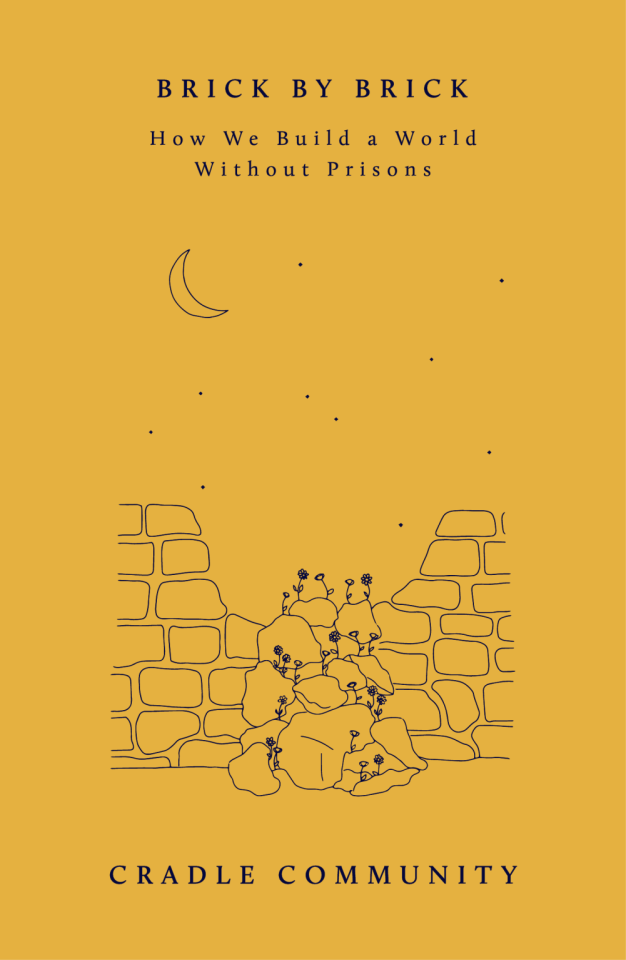
This is a difficult book to write about.
It difficult because I'm writing about topics I've barely learned about. Brick by Brick is by Cradle Community, a collective of organisers whose goal is to educate about prison abolition and transformative justice. And whilst the book is emotionally affecting and presents clear arguments, it really only feels like a first step to understanding and implementing a system of justice free of prisons.
Which it's meant to be! Brick by Brick presents the arguments for prison abolition, and it does it in a wholly effective way, using emotional stories to tug at the heartstrings and giving you the vocabulary and talking points to argue against the status quo. But it doesn't have the data to back it up. Without hard evidence, it's a lot of anecdotal evidence designed to appeal to the reader's emotions.
It presents a lot of facts which are, on the face of it, difficult to argue with: that prisons are places of isolation and punishment which rarely, if ever, give those inside the tools to reform and reintegrate, at best using them as a source of cheap labour. This doesn't touch on the legacy of imperialism inherent in the British prison system, or the close ties between immigration and the justice system, or that police who commit crimes are often protected by their colleagues closing ranks and thus don't see the justice that they purport to uphold. This is all discussed within the first half of the book, along with myriad other ways in which the criminal justice system fails the people it is supposed to protect, and fails the people it incarcerates too. Frankly, I think my first issue with the book is that it spends a lot of time saying why prisons are bad. I understand - it gives us talking points for every facet of the argument, from the racial (the lengthy history people of colour's disproportionate persecution at the hands of the justice system, compared to relatively lighter or even non-existent sentences for white people) to the environmental (that prisons are often built on waste ground which is not safe for those living or working there, and little thought is put into them by the builders of proper ventilation, clean water, or prisoner health in general). But it also doesn't help the problem feel any more surmountable - prisons are not permanent structures, much though they feel that way, but they feel as permanent as capitalism and the two-party system.
The latter half of the book - parts 3 to 5 - are all about how we look at and begin to build a world without prisons. It should come as no surprise that it's all fairly similar: the ultimate solution is community-building and grassroots organisation, acting together to fight the construction of new prisons, to provide security of food and shelter for people, and to protest against the state violence the puts people in prison in the first place. It's such a simple step, and an admirable one, but it's one I struggle with as a person who has difficulty speaking to new people and making friends (perhaps I'll pick up a book about it). And - to heap another criticism upon the pile - the community initiatives Brick by Brick highlights are, for the most part, based in London or the South of England, with little focus on the North or initiatives in the wider UK (with one environmental group highlighted in Scotland). It's understandable to some extent - many of these prisons and justice systems have headquarters centralised in London - but it's also disheartening as someone who lives in the north that there is little focus on activism and solidarity outside of the Capital.
But as far as prison abolition goes, Brick by Brick is a good start. Whilst I wouldn't recommend it in a vacuum, with other resources and some research to find local anti-prison initiatives it's a solid starting point which provides a breadth of talking points to get you arguing for abolition. I'd recommend it for it's "suggested reading" page, which provides enough resources on transformative justice to back up the anecdotes in the book. Overall, whilst I might be down on it for being more propagandistic than evidence-based, as I'd hoped, as an introductory text it's a good place to begin, and it gives you enough material to look for activist groups and read up further on transformative justice in your own time.
#book review#transformative justice#prison abolition#Brick by Brick#Cradle Community#Year of Learning#Community Building#nonfiction
4 notes
·
View notes
Text
"For most people, a rat is at best an unwelcome guest, and at worst, the target of immediate extermination. But in a field clinic in Tanzania, rats are colleagues—heroes even.
Far from a trash bin-dwelling NYC street rat, the African giant pouched rat is docile, intelligent, easier to train than some dogs, and for East Africans, the performer of lifesaving tuberculosis diagnoses every day.
400,000 new cases of tuberculosis (TB) were estimated to have been prevented by these rats, whose sense of smell would make a bloodhound take notice. As [TB is] the number-one killer among infectious diseases worldwide, many of those 400,000 can be translated into lives saved.
“Not only are we saving people’s lives, but we’re also changing these perspectives and raising awareness and appreciation for something as lowly as a rat,” said Cindy Fast, a behavioral neuroscientist who coaches the rodents for the nonprofit APOPO.
“Because our rats are our colleagues, and we really do see them as heroes.”
APOPO uses giant pouched rats to sniff out traces of TB in the saliva of patients. In parts of Tanzania, a saliva smear test under a microscope by a human may only be 20-40% effective at detecting TB.
By contrast, a giant pouched rat like Ms. Carolina, a now-retired service rat who worked for APOPO for 7 years, raised the rates of detection on TB samples by 40% in the clinic where she worked.

Pictured: An APOPO employee with one of their trained rats
It would take 4 days for scientists to analyze the number of samples that Carolina could screen in 20 minutes. For that reason, when Carolina retired last November, a party was thrown at the clinic in her honor, and she was given a cake.
TB is sometimes thought of as a thing of the past—a disease for which doctors used to prescribe “dry air,” leading a modern sense of humor to muse at the antiquated, pre-antibiotic medical advice.
But it remains the number-one cause of death globally from a single infectious pathogen, and Tefera Agizew, a physician and APOPO’s head of tuberculosis, told National Geographic that once people see what the nonprofit’s rodents can do to slow the spread, they “fall in love with them.”
3,000 times in her career did Carolina detect one of the six volatile compounds that can be used to identify Mycobacterium tuberculosis, and she got a hero’s send-off to a special compound to live out the rest of her days with her closet friend and sniffer colleague Gilbert, in a shaded enclosure dubbed “Rat Florida.”
“We’ve made special little rat-friendly carrot cakes with little peanuts and things on it that the rat would enjoy,” Fast said. “Then we all stand around and we clap, and we give three cheers, hip hip hooray for the hero, and celebrate together. It’s really a touching moment.”
APOPO has made headlines for its use of these rats in other lifesaving tasks as well: landmine clearance.
One of the world’s great underreported scourges (a lot like TB, coincidentally) is landmine contamination. There are 110 million landmines or unexploded bombs in the ground right now in about 67 countries, covering thousands of square miles in potential danger. Thousands of civilians are killed or injured by these weapons every year.
GNN reported on APOPO’s demining efforts using pouched rats back in 2020. One rat named Magawa alone identified 39 landmines and 28 items of unexploded ordnance across an area the size of 20 football fields.
If at the start of this story you didn’t like rats, maybe Magawa and Carolina will have changed your mind."
-via Good News Network, March 31, 2025
#rats#rodents#hero rats#african pouched rat#tanzania#africa#east africa#landmine#tuberculosis#tb#public health#infectious diseases#good news#hope#listen guys I love rats SO MUCH so this is my fav news story in a while#rats are beautiful and brilliant and deserve the world#idc what you think#also this particular species of rat lives like 7-10 years which is a HUGE improvement on the 1-3 typical pet rats live#so although I almost certainly would never actually have done it#I am very sad to learn that it is illegal to bring them into the US#killing my dreams#anyway rats make great pets thanks for listening to me ramble#lore drop: I love rats
3K notes
·
View notes
Text
look. here’s the thing. If you have a relative or family friend or some such who does a craft/hobby/skill that you’ve “always wanted to learn” you should ask them about it. Your grandma does embroidery and you want to learn? Sit down one day, or call her, or write a letter, or something, and say “I am interested in learning this craft.” There’s basically zero chance that Uncle Francis is gonna refuse to teach you about his model ships. Grandma is THRILLED to show you her quilting. Ms Barbara from the church bake sale WILL teach you how to make the fudge that made her second husband propose.
your friends and contemporaries are also a tremendous resource, and you should ask them too! But there’s just no replacement for the expertise of someone who has been knitting for sixty years. Part of this, also, is that older crafters can often give you materials to help you start, and your broke millennial friends usually can’t. My mom has more wool than she will ever use in her life, and she knows it. When one of my friends wanted to start knitting, my mom just gave her this gorgeous silver handspun yarn she’d made but wasn’t attached to. Yarn like that is expensive! Handspun yarn from someone who has been spinning for thirty years doesn’t often happen to beginners! And starting with good materials is better than starting with bad, because it helps you develop taste and a sense of quality more quickly.
Experienced crafters are often able to help you avoid learning bad or damaging habits—as a teenager, my sewing teacher spent a lot of time teaching me how to do things so that I didn’t get repetitive stress injuries (like she did). They’re going to be able to lend you books, send you ancient angelfire html pages with the most exacting instructions on earth, show you the good places to get crafting supplies that aren’t am*zon.
But you have to ask. Do not wait until these people are dead, and then say “I wish I knew.” You have to do it now, while you can.
#so you can inherit their stash in ten years#crafts#crafting#your older relatives and community members want to teach you!#you can learn insane gossip at Jeanie’s quilting club!
2K notes
·
View notes
Text

a year ago I drew this fanart for @cal-writes train AU (fic found HERE) and it has been my favorite piece of fanart of last year. So today I wanted to do a redraw, but instead of drawing the same piece again, I drew a prequel to the events in the last piece!
#one piece#cat burglar nami#roronoa zoro#op train au#alcohol cw#my art#I am feeling really good about this piece#I can see where I improved and what I learned over the last year#which is a wonderful feeling considering I was ready to quit art halfway through last year too#so a big hurrah for liking my own art and being proud of my progress!#now about the piece: this is set before the piece in the train and before the two of the got into a bar fight
4K notes
·
View notes
Text

the thing that caused me so much grief last night but now i feel better about it fdnghgdfggd
#sighhh im still kind of upset about the whole thing but man whatever i spent so long drawing this xd#sonic adventure 2#i loooove geralds cell i think its just so cool that sonic ended up in it and it was just kind of silently there#sonic the hedgehog#art#sonic fanart#sth#digital art#there are some issues with my rendering that i am trying to resolve but idk i guess i just have to try and learn#it's already better than what i could do like a year ago or so so i guess its alright#sa2
5K notes
·
View notes